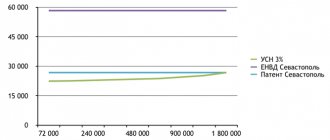Transport tax in 2021
What should vehicle owners prepare for next year?
The news may make some happy, while others may be upset. Everything will remain unchanged. The transport tax approved by the provisions of the federal law of the Russian Federation will continue to be a mandatory payment for vehicle owners, the regular payment of which will be monitored by regional government structures. There are no plans to increase the collection rate, nor to change the list of persons subject to the obligation to pay this tax. We are talking about the owners of: passenger cars; helicopters; motorcycles and scooters; snowmobiles; buses of different sizes and dimensions; motor boats and yachts; transport on pneumatic and caterpillar tracks.
It is still not worth counting on the absolute abolition of the transport tax, which annually brings about 146 billion rubles to the federal budget, in a crisis. However, there will be some changes in the system related to the timing of payment: Legal entities will be required to pay the fee before February 1, 2018 and at the same time immediately make a deposit for the next reporting period. Individuals will have to pay their tax bill by December 1, although previously receipts from vehicle owners were accepted only until October 1. This is good news for drivers - now they will have enough time to find the required funds.
The rules of the calculation system remain the same, and the fixed tax rate for transport will be calculated in the same way as before, based on three factors: the year of manufacture of the transport; duration of its operation; engine power. It is necessary to clarify that the collection coefficient for each region will be individual, so Moscow residents will not be able to be equal in the issue of transport taxation to St. Petersburg or Krasnodar, and vice versa.
Property tax in 2021
Changes next year will seriously affect the category of real estate for individuals: for example, if previously a resident of the capital, when buying a 2-room apartment in the city center, paid a tax equal to 500 rubles to the treasury, then upon completion of the new reform this amount will increase to 5,000 rubles per year and more ! This increase in the fee is due to the fact that now, instead of an inventory assessment of the premises, the main factor will be a cadastral assessment, which brings any real estate property as close as possible to its market value. According to the new law, the tax amount will be 0.1–2% of the cadastral price, will become heterogeneous for owners of different categories and types of housing, and will be updated over 5 years based on the assessments of independent experts.
The tax will apply to owners:
- unfinished residential construction projects;
- garages, parking spaces;
- apartments, rooms, other residential premises;
- complexes containing at least 1 residential premises;
- household buildings with an area of up to 50 m2, located on the site and intended for gardening and summer cottage work.
Owners will also be required to submit reliable information about the property they own to the tax authorities. In case of failure to comply with this requirement or falsification of information, owners face penalties in the form of payment of 20% of the real tax.
Benefits for real estate in 2021 will remain the same and will not undergo any changes.
Features of the transition to OSNO from other systems
The transition to OSNO can be voluntary or forced. With voluntary, everything is clear: a business decides that it is more profitable for it to fulfill financial obligations on a general basis, it submits a corresponding notification and the tax authorities transfer it.
But what does forced transfer mean? If a taxpayer ceases to meet the requirements for using any of the preferential methods of paying taxes - simplified tax system, UTII, PSN or unified agricultural tax - the Federal Tax Service will transfer him to the general system without permission. It doesn’t matter what the reason was - an increase in the number of employees, an unplanned high income, a change in the direction of work.
Suppose an organization does not have time to submit any reports, of which there are quite a lot on the general system, it will receive a fine. If you make inaccuracies in calculations or make one of the payments late, you will also be fined. Therefore, strictly ensure that your payments with the Federal Tax Service and the state meet the criteria.
Transition from simplified tax system
Voluntarily changing the simplified system to OSN is allowed only from the next reporting period, not otherwise than from the new year. Do it before January 15, otherwise the inspection will not accept the application. A forced transition is allowed if the organization exceeds the simplified tax system limits for employees or profits - also before the 15th day of the month after the reporting month. Be prepared for a multiple increase in document flow and hiring at least one accountant on staff.
The notification is not submitted in any form, but according to a strictly unified form 26.2-3. Like all other application samples, it is available for download on the official website of the tax office. This is just one sheet on which the name of the LLC or the name of the entrepreneur and the year from which the taxpayer changes the method of paying taxes are indicated. Preparation will take 5 minutes; you can write by hand or type on a computer.
To switch from the simplified tax system to the OSNO, you must submit a notification in form 26.2-3
Transition from UTII
It is also possible to leave the imputed regime for OSN voluntarily or forcibly. A forced transition occurs when a business is deprived of the right to calculate taxes according to imputation:
- in the region, his type of activity was excluded from the list for UTII;
- the area of the premises exceeded 150 sq.m;
- the staff exceeded 100 people.
When a taxpayer decides to stop using it, he submits a corresponding notification to the Federal Tax Service. This must be done within 5 days from the date of termination of work under imputation or after the last day of the month when any of the regime limits were violated. You will need the UTII-3 form. Filling it out is quite simple: indicate the name of the organization, work address, activity code and signature. There is no need to explain the reasons.
Transition from Unified Agricultural Tax
The Unified Agricultural Tax is a preferential simplified version for producers of agricultural products. The taxpayer must comply with one important condition - the share of income from agricultural products must be at least 70% of the total income. If this condition is not met, it is necessary to change the payment regime with the state.
Let's say a manufacturer plans to work according to OSN. He submits a notification to the Federal Tax Service in form 26.1-3 and officially refuses the Unified Agricultural Tax. This is a simple form where you need to indicate the name of the organization or the name and year from which work is planned on the new method of calculating taxes. After this, it is allowed to use both OSNO (without special notice) and simplified tax system (if you submit form 26.2-1).
Transition from Patent
Patent tax authorization can also be lost. For example, if a businessman earned over 60 million rubles in a year or employed more than 15 people. The downside is the following: if the right to PSN is deprived, the inspectorate will impose a penalty on the taxpayer for unpaid VAT for 3 months. Therefore, monitoring compliance with the conditions for using a patent must be treated with care.
In case of a voluntary transfer, it is required to notify the Federal Tax Service in form 26.5-4. This is a simple document where the taxpayer indicates his name, date of termination of work under PSN, patent number and signature. Preparing the document will take no more than 5 minutes. After this, the entrepreneur has the right to use OSNO or apply for a transition to another option for calculating taxes.
The taxpayer on the OSN submits a VAT return quarterly
Real estate sales tax for citizens
If earlier, before 2021, citizens had to pay 13% of the amount under the contract, or the cadastral value, multiplied by a reduction factor of 0.7 from the property sold (provided that the property was owned for less than three years), and after 2021 Since the beginning of 2021, the three-year period has been extended to five years; then, from the beginning of 2021, the tax benefit for exemption from sales tax after the expiration of the statute of limitations for the possession of a property is generally removed.
Even if a citizen has owned a property in 2021 for more than three or more than five years, he will be required to pay a tax on its sale in the amount of 13%. The letter of the Ministry of Finance of the Russian Federation No. 03-11-17/76399 dated June 25, 2017 tells us about this.
Organizational property tax 2021
Legal entities will also have to feel the brunt of the crisis period in their pockets: along with the prices of ordinary housing, the cost of commercial premises and rent will increase. Although the Ministry of Finance has so far spoken little on this topic, it is already obvious that the methodology for determining the cadastral values of commercial and non-residential property will be taken under control. The register of non-residential real estate will be streamlined, and its maximum filling will be a prerequisite. The general principles of property taxation here will be the same as for individuals. The only thing that will change is the size of the percentage and the fact that the issue of maintaining benefits in this case will be decided individually by the administration of each region.
STS (Simplified Taxation System)
Can be used by a wide range of individuals, both individuals (IE) and legal entities (LLC), working in the field of small business. There are two types of objects of use according to the simplified tax system, and businessmen are required to decide with the Federal Tax Service which one they want to use:
- Based on income minus expenses. The rate on it is 15% of the difference between income (revenue) received from doing business and expenses (expenses) for it. Suitable for companies and private individuals who reflect fixed costs that can be deducted to reduce the tax base. For example, for trade (the amount of products purchased from suppliers is deducted), installation (the cost of equipment, purchase of components is deducted), production work (depreciation, materials, electricity, other production costs). Payments under the simplified tax system must be made quarterly, before the 20th day of the month following the end of the quarter.
- By income. The rate is 6% of the amount of revenue earned from the business. Suitable for those types for which it is difficult to account for costs. For example, the scope of providing various services: accounting, legal, information orders. This tax accounting is extremely simplified to maintain, reports and payments for it are listed and provided quarterly, within the same time frame as the simplified tax system (the previous method is the difference between income and expenses).
Read also:
How to become rich: ranking of the world's best bestsellers for aspiring businessmen
Individual entrepreneur taxes 2021
The Ministry of Finance has also prepared innovations for individual entrepreneurs: from 2021, the maximum income limit for people running their own business, according to the simplified taxation system (STS), will be equal to 150 million annually. This fixed rate will last until 2021. Tax rates have remained unchanged, but today Russian regions can set reduced duty rates on an individual basis. Each individual entrepreneur will have to pay just over 24,000 rubles for pension contributions in 2021, and contributions for health insurance will amount to about 5,000 rubles. At the same time, a bill is under consideration that could theoretically exempt entrepreneurs from deductions based on the regularly growing minimum wage indicator. A large number of private traders today oppose this practice, because it turns out to be completely unprofitable for the owner of his business.
Land tax 2021
In the year of the Yellow Dog, collection from the land owner will also be carried out based on the cadastral value of the territory owned by a person, that is, we are again talking about the need to establish the real value of the land plot. However, practice shows that officials’ assessments are often biased and overstated; in this case, a taxpayer who disagrees with the established fee rate may go to court. The payment amount will increase by 20% and will continue to grow until 2021. According to preliminary estimates by experts, in a number of regions budget revenues will increase by 7-8 times and thereby make it possible to allocate sufficient funds for the development of urban infrastructure. Vacation tax 2021 From January 1, 2021 to December 31, 2022, as an experiment, it is also planned to introduce a special tax levy in 4 resort areas: in the Altai Territory; in the Republic of Crimea; in the Stavropol Territory; in the Krasnodar region. The resort tax will be levied on visiting tourists, both Russians and foreign citizens, with the exception of traditional categories of beneficiaries (veterans, disabled people, students, persons under 18 years old, etc.). It is assumed that the fee will be up to 100 rubles per day for the actual stay in the accommodation facility, and the principles of seasonality and differentiation are allowed depending on the place of stay of the vacationer in the resort region, the purpose of his trip, the significance of the area and its importance for surrounding municipal institutions. Income tax 2021 Excise rates will also increase more strongly. It is possible that the heads of enterprises will have to pay a profit tax increased by 15%, with at least half of this figure (6-8%) going directly to the federal treasury.
Officials plan to mitigate the increase in personal income tax with compensatory introductions - a reduction in insurance premiums by 21% and, in general, maintaining an unchanged tax system for employers. The option of switching to a progressive scale of personal income tax rates in the new year is also being considered. New taxes in 2018 The list of qualitatively new taxes for Russians from 2021 may include: AIT - a tax on additional income, which will replace the mineral extraction tax, or mineral extraction tax. AIT will be associated with the zeroing out of export duties on petroleum products and oil, as well as with a gradual transition to a system of internal taxation; robot labor tax; pension tax (will be collected by the Central Bank from pensioners for budget payments using the Mir payment card system, for the maintenance of which you will need to pay 750 rubles annually). It is still unknown whether the introduced changes will cover the budget deficit. Be that as it may, we now know what to prepare for. This article discussed the main changes that are coming to the tax system in 2021. The development of legislative projects will continue and be adjusted. However, today, thanks to this material, it is possible to get a comprehensive picture of new taxes in 2021 and changes to existing fees.
Features of OSNO
The general taxation system is also called the basic taxation system, and the abbreviation of this name may look like OSN or OSNO . We prefer the latter option.
Organizations on OSNO pay the following taxes:
- corporate income tax at a rate of 20%, with the exception of a few preferential categories of taxpayers;
- VAT at the rate of 0%, 10%, 20%;
- corporate property tax at a rate of up to 2.2%.
Individual entrepreneurs on OSNO pay:
- personal income tax at a rate of 13%;
- VAT at the rate of 0%, 10%, 20%;
- property tax for individuals at a rate of up to 2%.
You can be on OSNO for the following reasons:
- The taxpayer initially does not meet the requirements and restrictions provided for the preferential tax regime, or subsequently ceased to satisfy them;
- A businessman must be a VAT payer;
- The taxpayer falls into the category of income tax benefits (for example, a medical or educational organization);
- Simply out of ignorance that there are other taxation systems.
- Some other good reasons, because if you decide to engage in activities for profit, it is difficult to assume that you deliberately chose the regime with the highest tax burden.
VAT calculator







